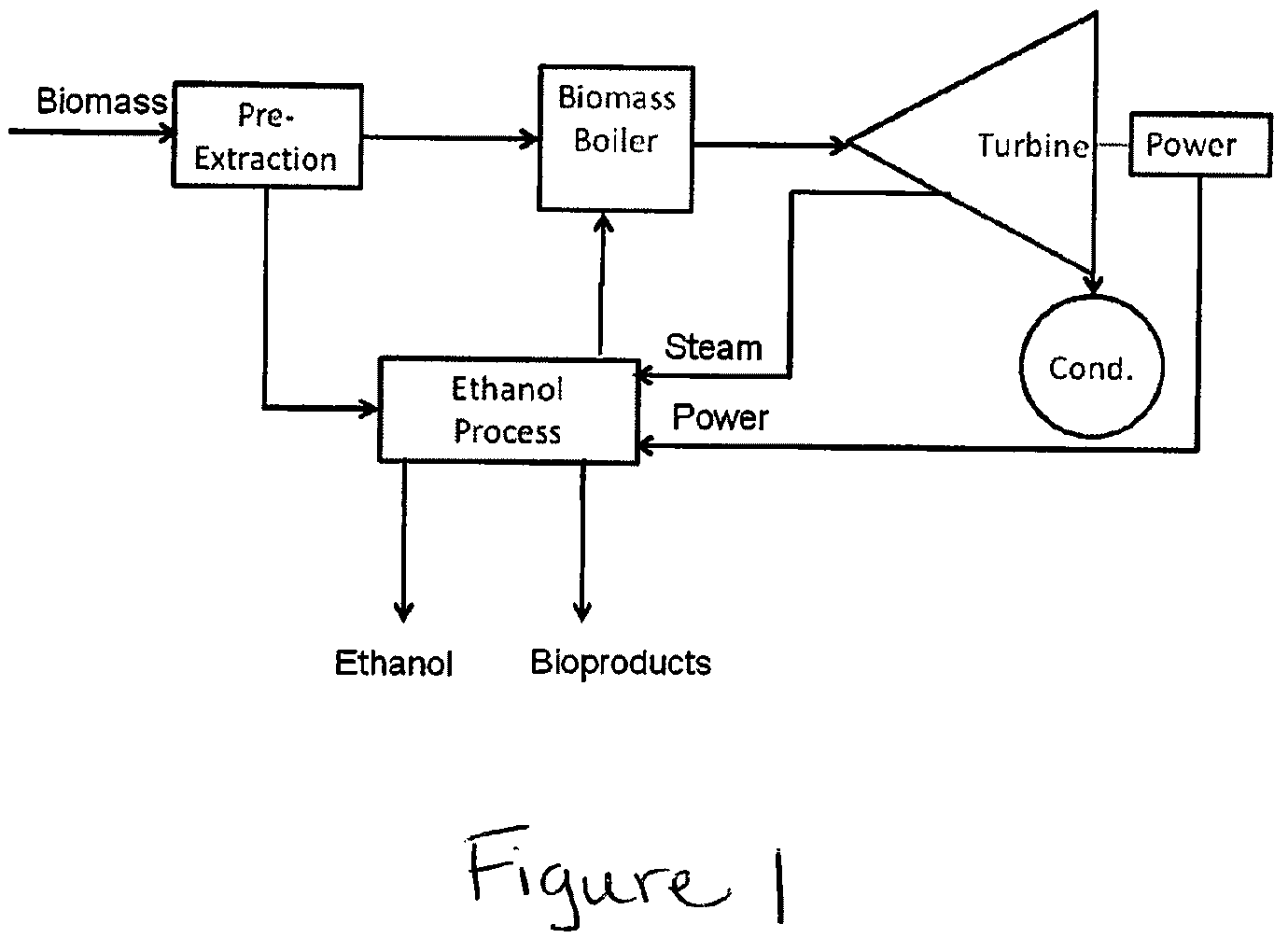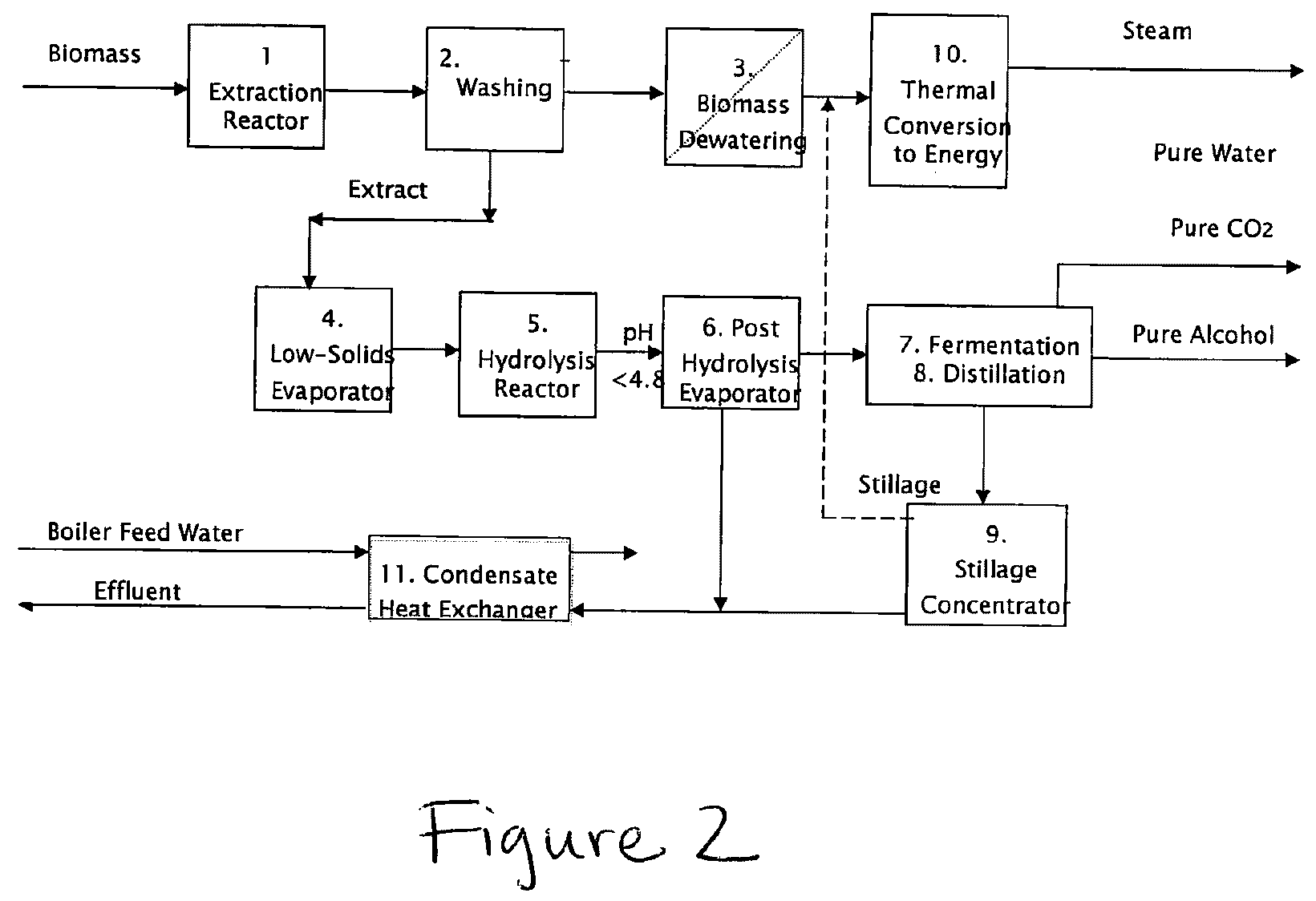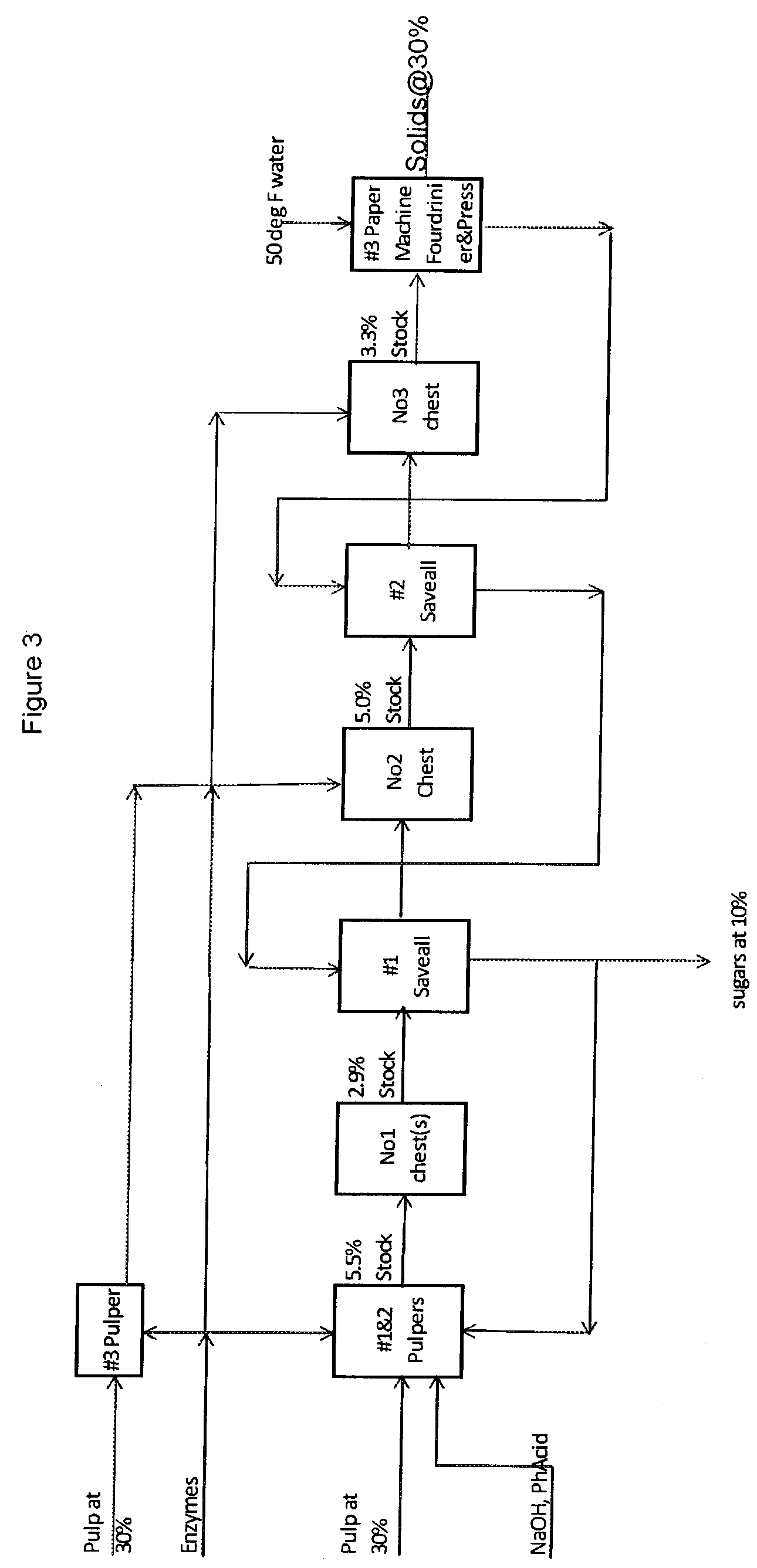Process for producing hemicellulose sugars and energy from biomass
a technology of hemicellulose sugar and biomass, which is applied in the direction of combustion types, lighting and heating apparatuses, instruments, etc., can solve the problems of disproportionally more energy, inefficiency of the process, and energy intensive concentration of extract through evaporation, so as to minimize process energy and water consumption, the effect of minimizing the overall steam and water
- Summary
- Abstract
- Description
- Claims
- Application Information
AI Technical Summary
Benefits of technology
Problems solved by technology
Method used
Image
Examples
example 1
[0056]5 grams of O.D. pine pulp at 18.5% consistency from alcohol sulfite process was dissolved with deionized water to 100 ml of pulp suspension. 250 mL Erlenmeyer flasks were used. Enzyme stock solution was prepared in 50 mM acetate buffer (pH 5.02). Final volume was made up to 100 mL with deionized water. 100 mg of Novozymes Ctec / Htec enzymes were added at [8:1] ratio. Enzymatic reaction was incubated on a water bath at 50° C. and mixed at 200 rpm.
[0057]After the first 36 hour retention period, 25 mg of enzyme formulation was added. The hydrolysis was allowed to proceed another 36 hours, at which point another 25 mg of enzyme was added.
[0058]The procedure resulted 84.7% weight loss. In comparison, the hydrolysis of same pulp with the same 150 mg enzyme dosage in one step resulted 84% weight loss.
example 2
[0059]5 grams of O.D. pine pulp at 18.5% consistency from alcohol sulfite process was dissolved with deionized water to 100 ml of pulp suspension. 250 mL Erlenmeyer flasks were used. Enzyme stock solution was prepared in 50 mM acetate buffer (pH 5.02). Final volume was made up to 100 mL with deionized water. 50 mg of Novozymes Ctec / Htec enzymes were added at [8:1] ratio. Enzymatic reaction was incubated on a water bath at 50° C. and mixed at 200 rpm.
[0060]After 36 hours, 50 mg of enzyme formulation was added. The hydrolysis was allowed to proceed another 36 hours, at which point another 50 mg of enzyme was added.
[0061]The procedure resulted in 75.7% weight loss. In comparison, the hydrolysis of same pulp with the same 150 mg enzyme dosage in one step resulted in 84% weight loss.
example 3
[0062]5 grams of O.D. pine pulp at 18.5% consistency from alcohol sulfite process was dissolved with deionized water to 100 ml of pulp suspension. 250 mL Erlenmeyer flasks were used. Enzyme stock solution was prepared in 50 mM acetate buffer (pH 5.02). Final volume was made up to 100 mL with deionized water. 100 mg of Novozymes Ctec / Htec enzymes were added at [8:1] ratio. Enzymatic reaction was incubated on a water bath at 50° C. and mixed at 200 rpm for 12 hours.
[0063]The suspension was dewatered to 10% consistency. The hydrolysis proceeded to approximately 32% weight loss in 24 hours. A fresh buffer and 25 mg of enzyme formulation was added to 5% consistency. The hydrolysis was allowed to proceed another 12 hours, at which point the consistency was increased to 10% for 24 hours.
[0064]The hydrolysis proceeded to approximately 47% weight loss, at which point fresh buffer and 25 mg of enzyme formulation was added to 5% consistency. The hydrolysis was allowed to proceed another 12 hou...
PUM
| Property | Measurement | Unit |
|---|---|---|
| pH | aaaaa | aaaaa |
| pressure | aaaaa | aaaaa |
| extraction time | aaaaa | aaaaa |
Abstract
Description
Claims
Application Information
 Login to View More
Login to View More - R&D
- Intellectual Property
- Life Sciences
- Materials
- Tech Scout
- Unparalleled Data Quality
- Higher Quality Content
- 60% Fewer Hallucinations
Browse by: Latest US Patents, China's latest patents, Technical Efficacy Thesaurus, Application Domain, Technology Topic, Popular Technical Reports.
© 2025 PatSnap. All rights reserved.Legal|Privacy policy|Modern Slavery Act Transparency Statement|Sitemap|About US| Contact US: help@patsnap.com



